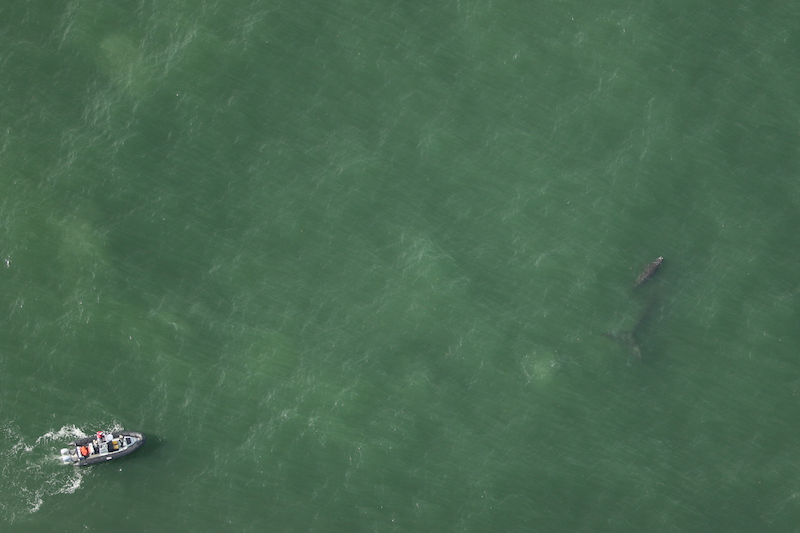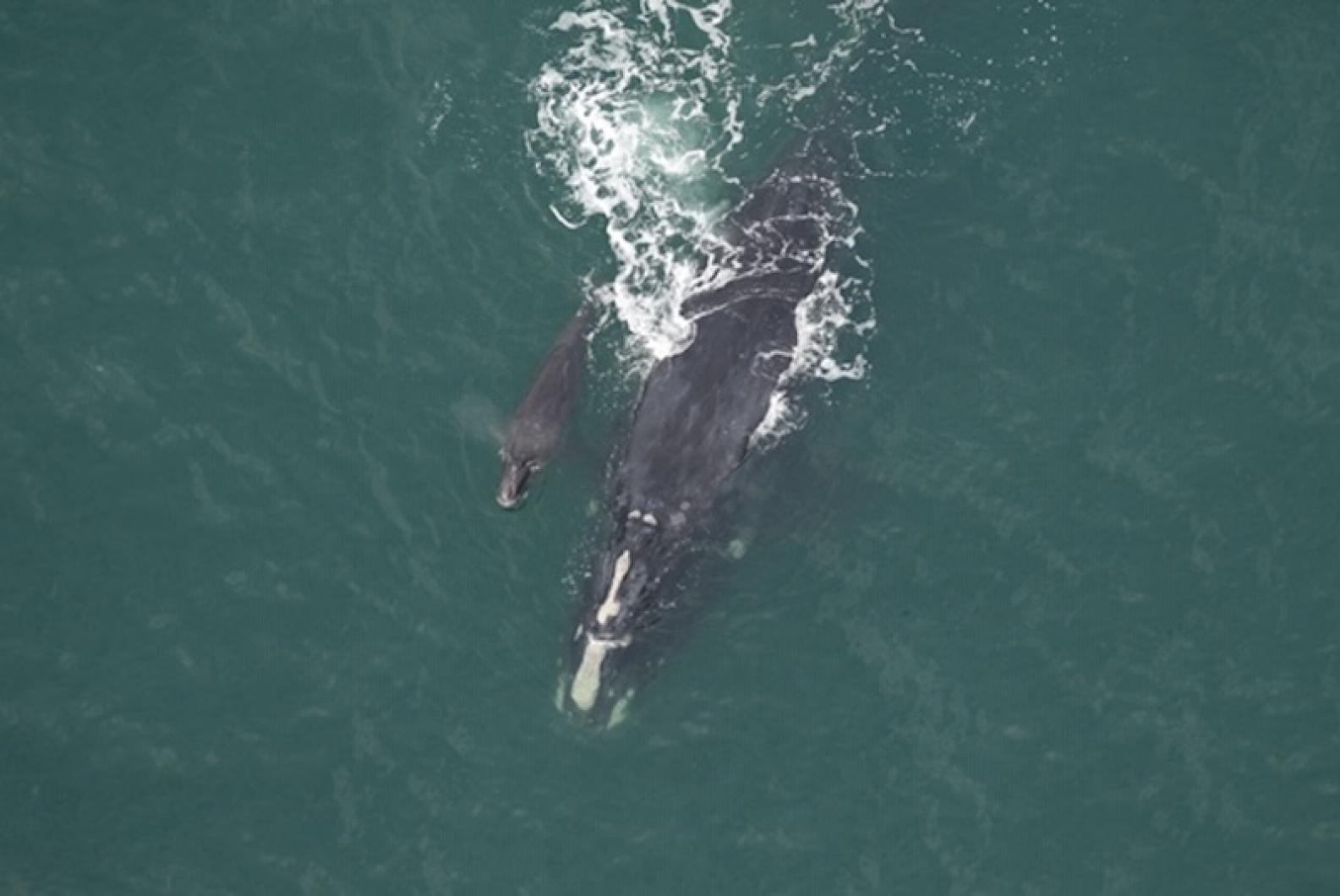Less than a month into the calving season, four baby North Atlantic right whales have already been spotted off the coast of Florida and Georgia. Although the calves offer a glimmer of hope for the critically endangered species, a serious injury to one underscores the perilousness of their future.
On Dec. 28, the first calf of the season was seen by aerial survey teams in Georgia waters near Clearwater, Fla. The mother, listed as whale 3560, is 15 years old. This was her first known calf.
Over the next two weeks, researchers spotted two more calves in the traditional calving grounds off the southeastern United States. One of the mothers, Harmonia, is a 19 year old who has given birth two previous times. The other is a 34-year-old whale who has been one of the species most dependable mothers, giving birth seven times since the late 1980s. The most recent calf is her first since 2013.

Disaster, however, literally struck last week, when the fourth calf of the season was spotted with two roughly parallel S-shaped injuries around its face and mouth. The scars indicated a vessel strike, NOAA spokesman Jennifer Goebel said. The latest updates from the agency state that the prognosis for the calf is poor, with fears that the mouth injuries will hamper its ability to nurse and feed.
The calf was born on Jan. 9 to a 27-year-old mother named Derecha. Researchers suspect that the vessel strike came within hours of its birth. Investigations regarding the vessel strike are ongoing while conservation agencies attempt to monitor the health of the mother and calf pair.
A voluntary vessel speed restriction was instituted south of Nantucket earlier this month, after whales were spotted swimming around the Island. Most recently, there have also been whales spotted in Cape Cod Bay.
Once one of the most abundant whale species on Earth, the North Atlantic right whale was hunted to the brink of extinction in the 19th and early 20th centuries, and declared functionally extinct by the 1980s.
But over the past 40 years, a robust international conservation effort has mobilized to save the species, conducting extensive whale monitoring and research throughout the East Coast and Canada. Despite the efforts, recent years have still seen declining birth rates and an increase in the number of deaths due to entanglements and vessel strikes.
In 2017, there were no calves born and 17 deaths. Last year saw seven births and at least 10 deaths. Currently, there are only about 400 known whales left in existence.
The National Oceanic and Atmospheric Administration, a federal agency dedicated to preserving the species, has stringent regulations pending that will likely include restrictions and gear modifications on vertical fishing buoys and an expansion of gear marking. The rules are set to be published in the next few months, with a comment period to follow.
In response to the rules, NOAA announced last week that it would allocate $1.6 million in federal funds to assist the lobster fishing industry in adapting to the impacts of the pending regulations, as well as current regulatory measures.
Last fall, the Maine Lobstermen’s Association announced that it had backed away from its previous commitment to regional measures meant to reduce the risk of right whale injuries and deaths because of their onerous impact on the already-struggling industry, among other concerns. Nearly all the anthropogenic, or human-caused right whale deaths last year occurred in Canadian waters in the Gulf of St. Lawrence.







Comments (5)
Comments
Comment policy »